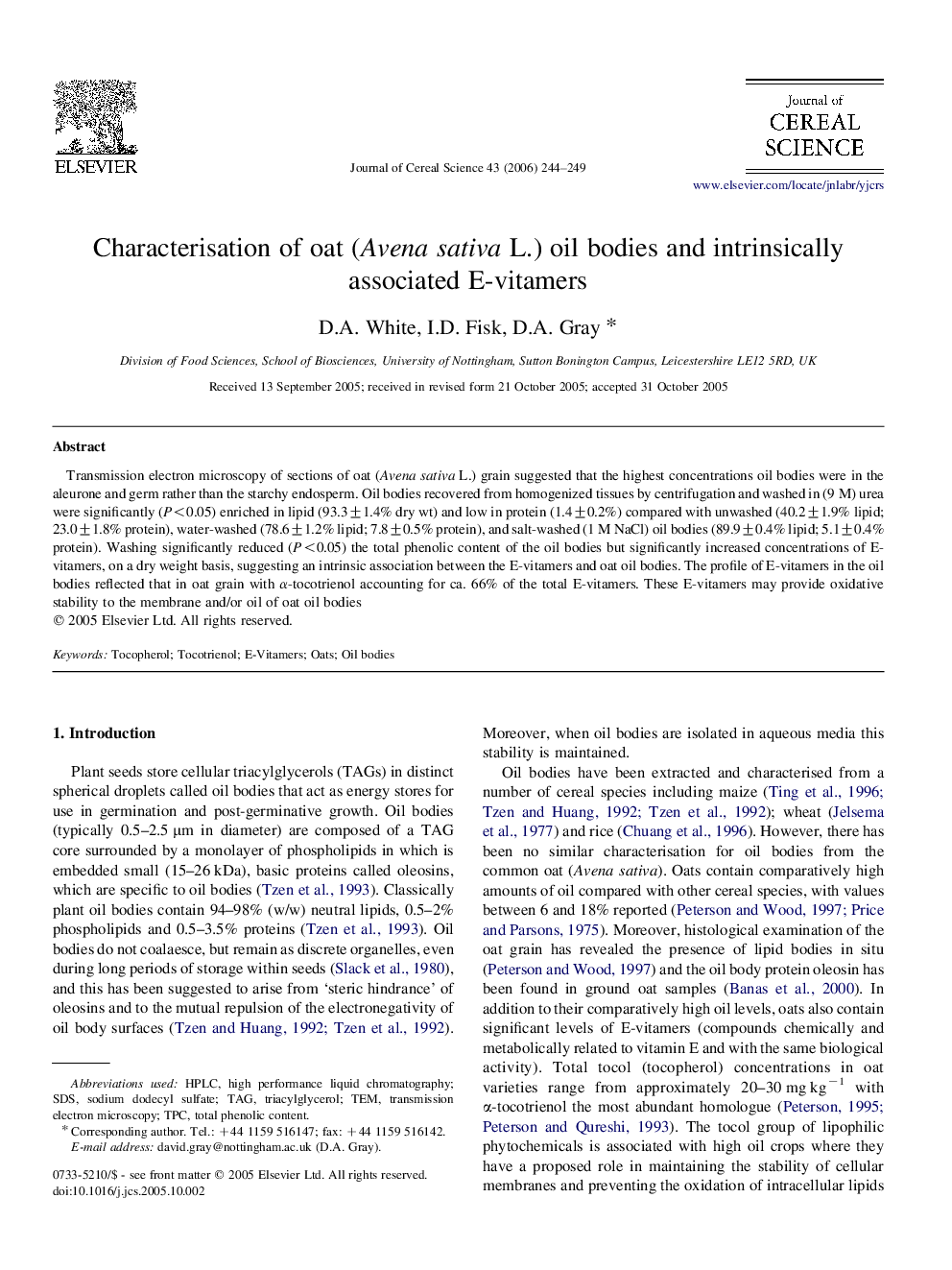| Article ID | Journal | Published Year | Pages | File Type |
|---|---|---|---|---|
| 4516905 | Journal of Cereal Science | 2006 | 6 Pages |
Transmission electron microscopy of sections of oat (Avena sativa L.) grain suggested that the highest concentrations oil bodies were in the aleurone and germ rather than the starchy endosperm. Oil bodies recovered from homogenized tissues by centrifugation and washed in (9 M) urea were significantly (P<0.05) enriched in lipid (93.3±1.4% dry wt) and low in protein (1.4±0.2%) compared with unwashed (40.2±1.9% lipid; 23.0±1.8% protein), water-washed (78.6±1.2% lipid; 7.8±0.5% protein), and salt-washed (1 M NaCl) oil bodies (89.9±0.4% lipid; 5.1±0.4% protein). Washing significantly reduced (P<0.05) the total phenolic content of the oil bodies but significantly increased concentrations of E-vitamers, on a dry weight basis, suggesting an intrinsic association between the E-vitamers and oat oil bodies. The profile of E-vitamers in the oil bodies reflected that in oat grain with α-tocotrienol accounting for ca. 66% of the total E-vitamers. These E-vitamers may provide oxidative stability to the membrane and/or oil of oat oil bodies
